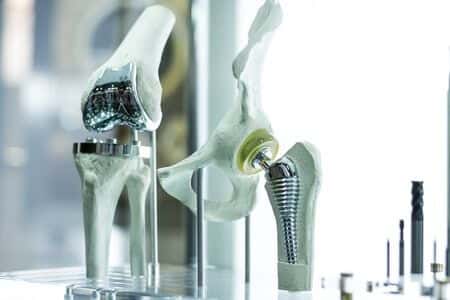Total Hip Replacement Requires Revision After Six Months
Updated on
Case Overview
This kinesiology case involves a male patient who underwent a ceramic total hip replacement surgery due to degenerative arthritis and chronic hip pain. The patient complained of constant pain at approximately six weeks after the surgery, which was isolated to the gluteal fold region. It also radiated down his hamstring. Less then three months after the initial procedure, the patient underwent an open reduction and internal fixation due to non-union of the trochanteric site. Additionally, a revision procedure of the femoral component was conducted due to device loosening. Five months after his initial procedure, the patient sustained a dislocation of the hip that required a closed reduction. After several other complications, the patient required a total hip revision that was performed six months after his initial hip surgery.
Questions to the Orthopedic Surgery expert and their responses
How could this dislocation and revision procedure have been avoided?
Dislocation is the most common complication of hip replacement surgery. The chance of this is diminished if less tissue is cut, if the tissue cut is repaired, and if large diameter head balls are used. Surgeons who perform more of the operations each year tend to have fewer patients dislocate. Doing the surgery from an anterior approach seems to lower dislocation rates when small diameter heads are used, but the benefit has not been shown when compared to modern posterior incisions with the use of larger diameter heads. Patients can decrease the risk further by keeping the leg out of certain positions during the first few months after surgery. Use of alcohol by patients during this early period is also associated with an increased rate of dislocation.
About the expert
This expert is board certified in Surgery and has additional fellowship training in Sports Medicine. He was trained at New York College of Medicine at the Hospital for Special Surgery, and is currently in active practice at a major medical center in New York City where he performs arthroscopic procedures on a daily basis. Finally, he is the chief consulting orthopedic physician for a major sports rehabilitation center in the northeast.

E-000626
Specialties:
About the author
Michael Talve, CEO
Michael Talve stands at the forefront of legal innovation as the CEO and Managing Director of Expert Institute. Under his leadership, the Expert Institute has established itself as a vital player in the legal technology arena, revolutionizing how lawyers connect with world-class experts and access advanced legal technology. Michael's role involves not only steering the company's strategic direction but also ensuring the delivery of unparalleled intelligence and cutting-edge solutions to legal professionals. His work at Expert Institute has been instrumental in enhancing the capabilities of attorneys in case preparation and execution, making a significant impact on the legal industry's approach to expert consultation and technological integration. Michael's vision and execution have positioned the Expert Institute as a key facilitator in the intersection of law and technology.
Subscribe to our newsletter
Join our newsletter to stay up to date on legal news, insights and product updates from Expert Institute.
Sign up nowFind an expert witness near you
What State is your case in?
Subscribe to our newsletter
Join our newsletter to stay up to date on legal news, insights and product updates from Expert Institute.



